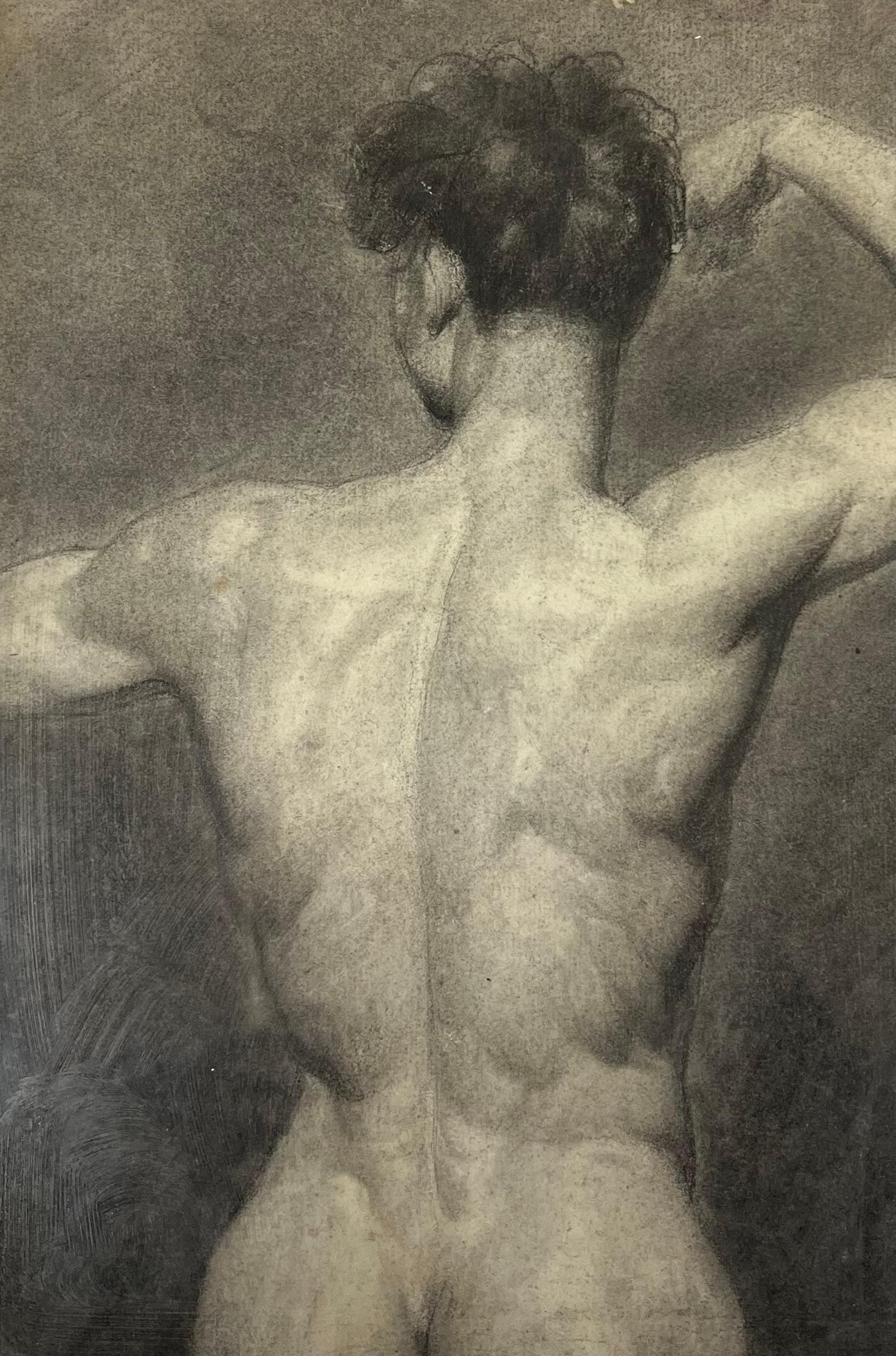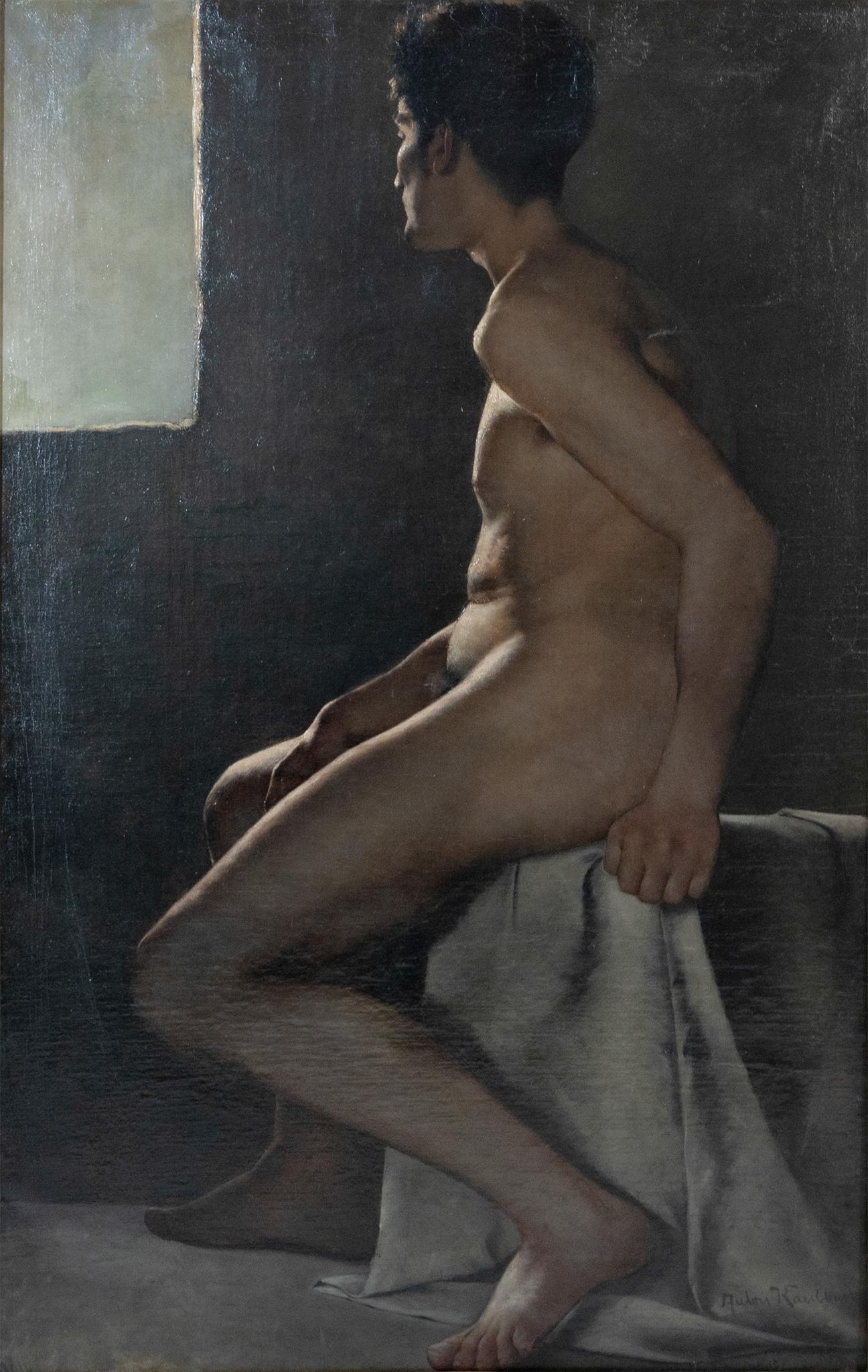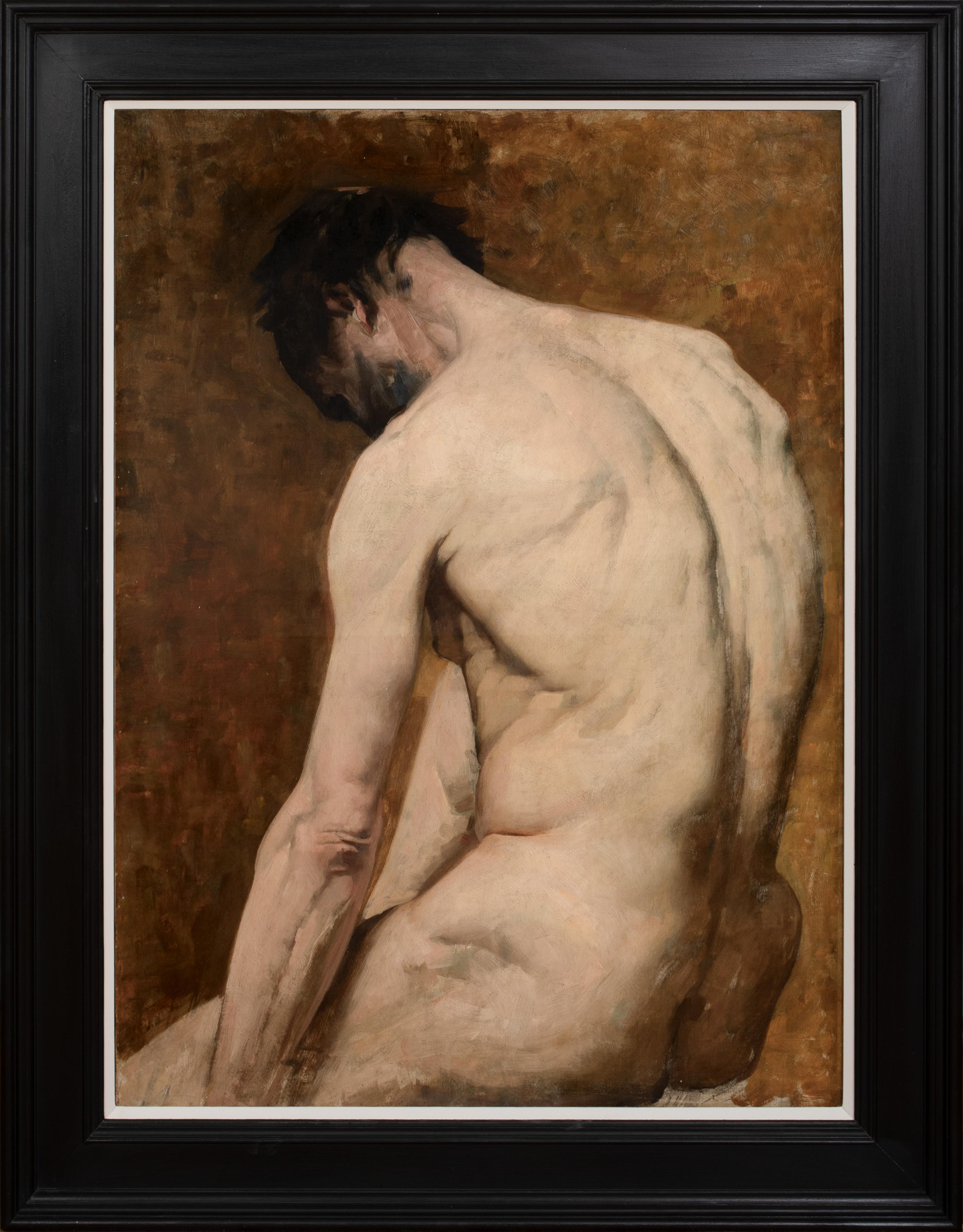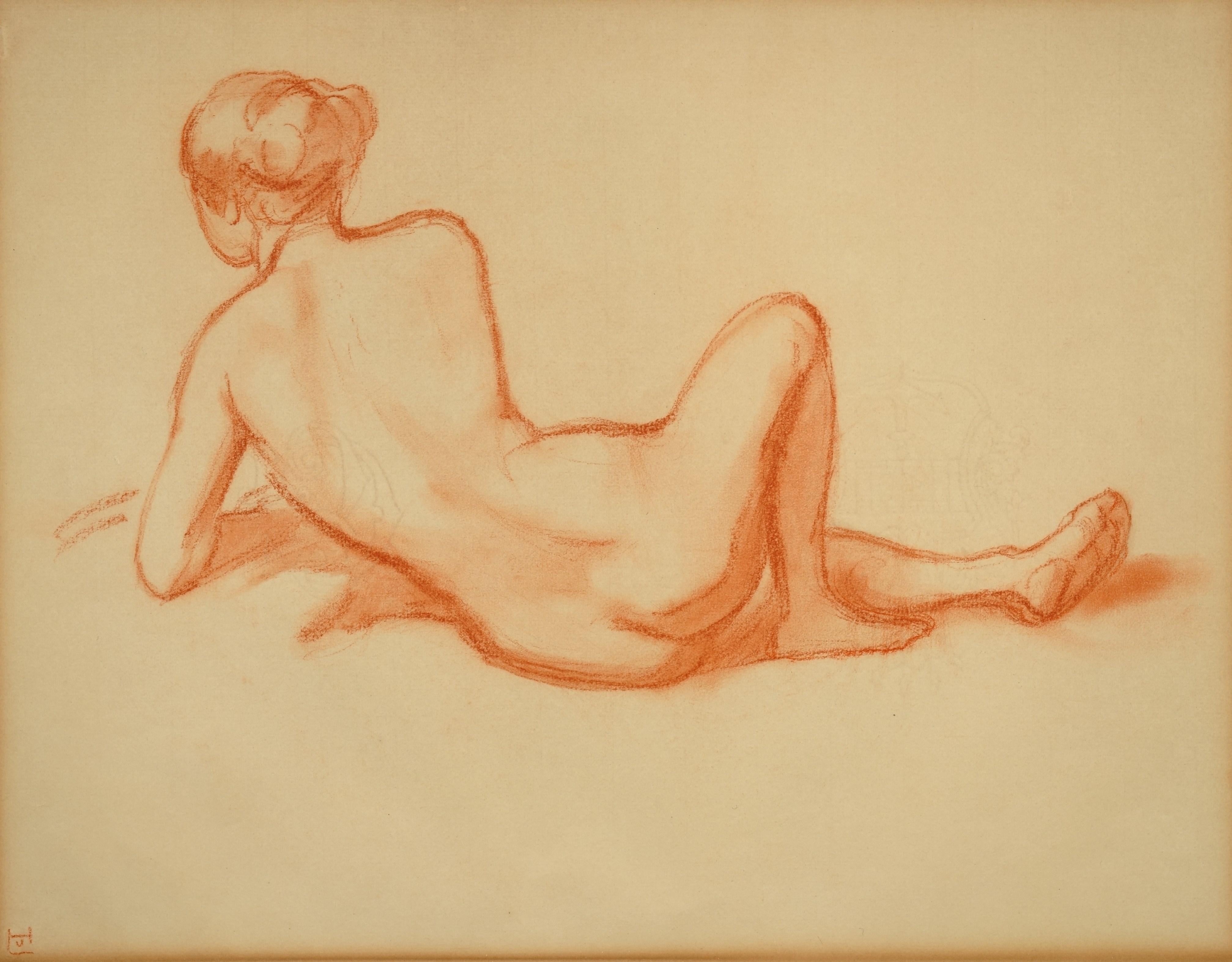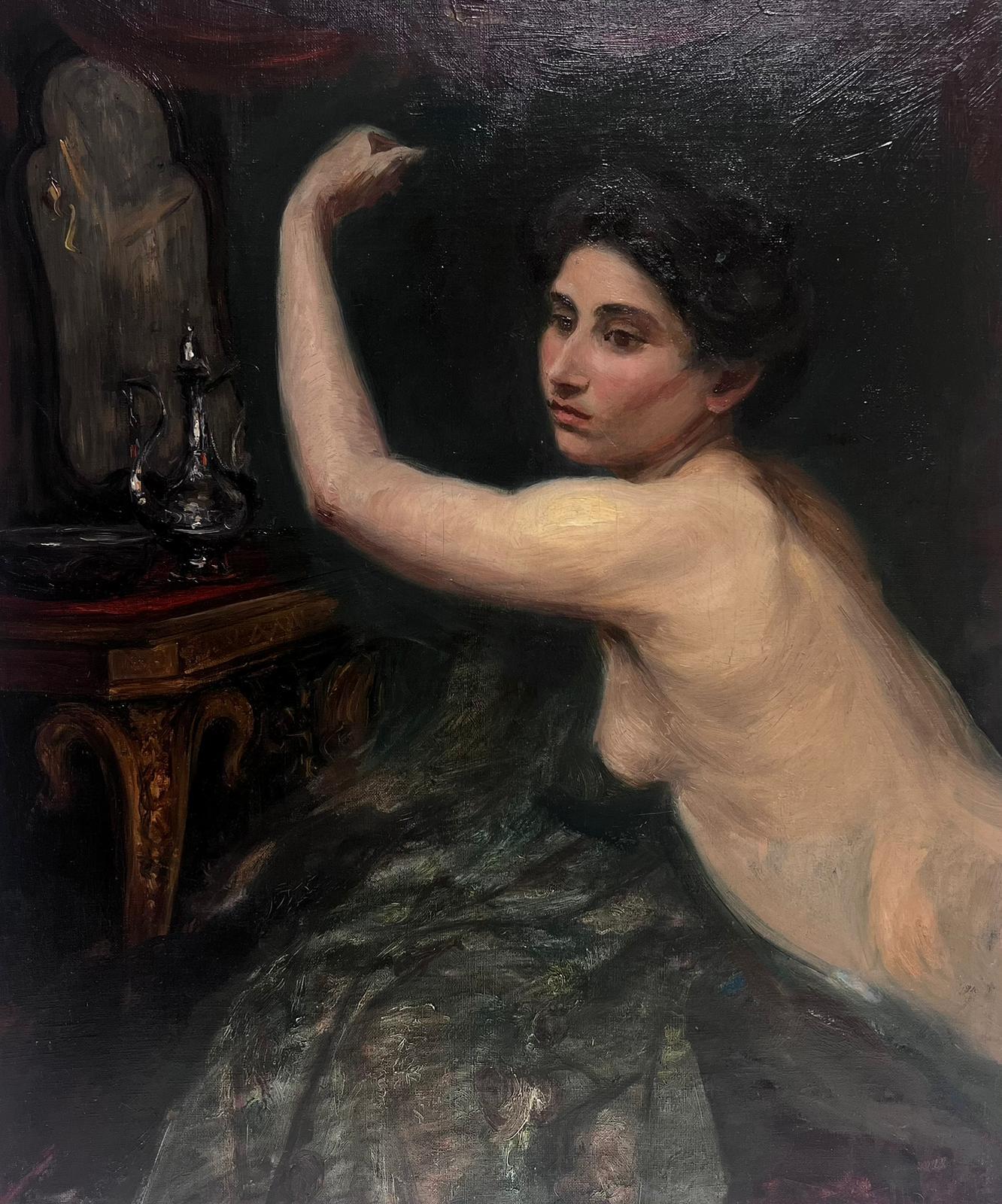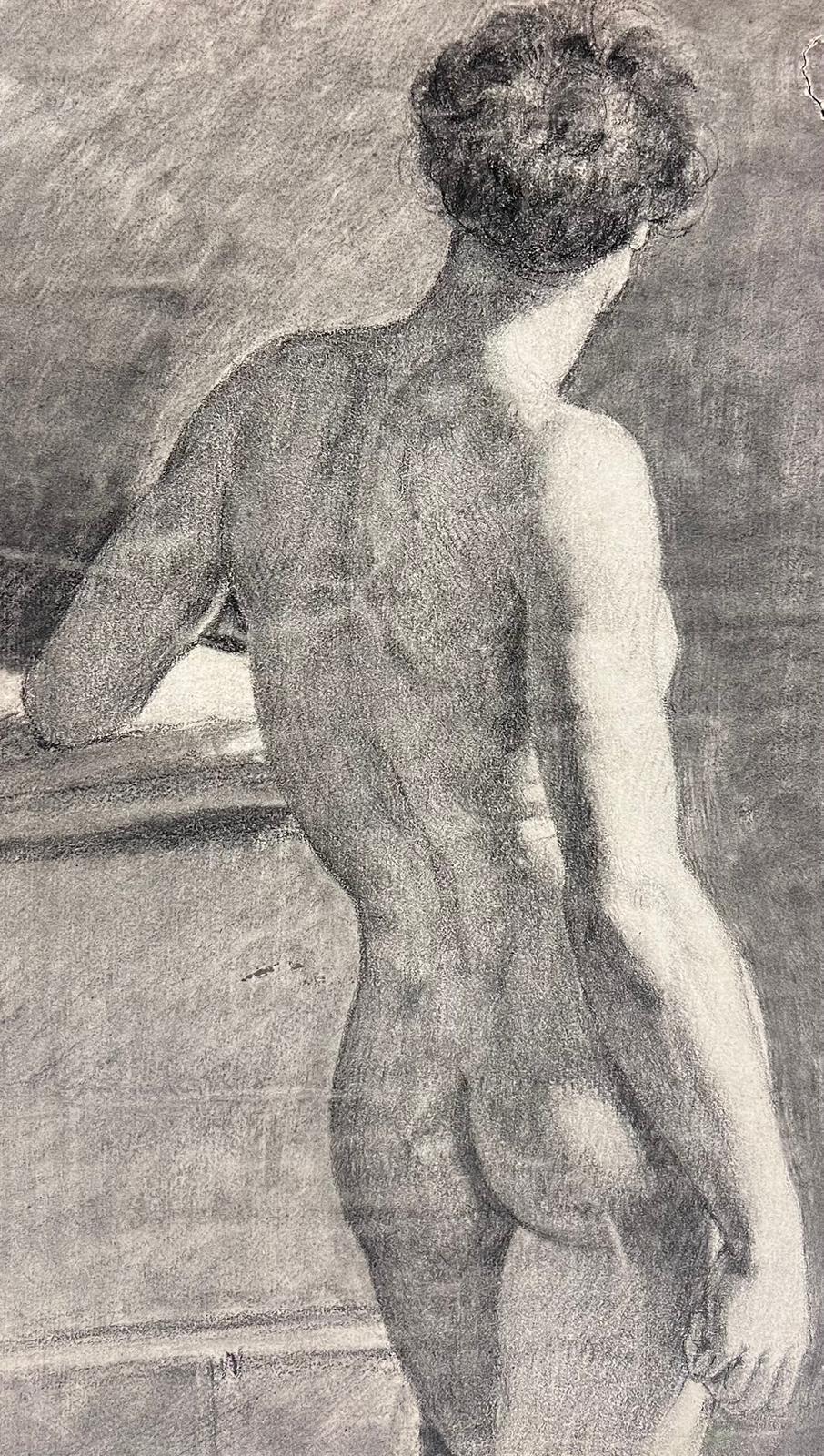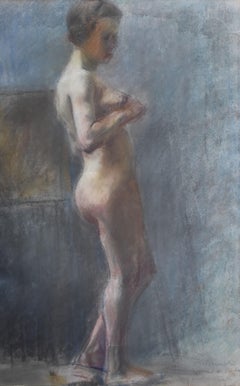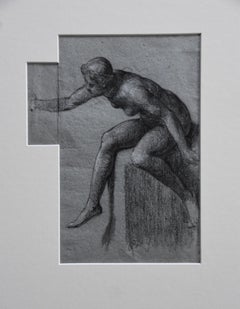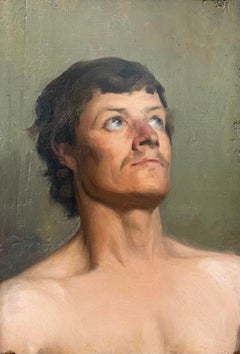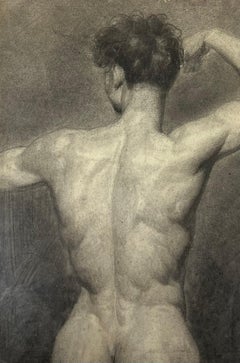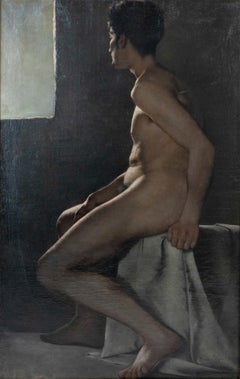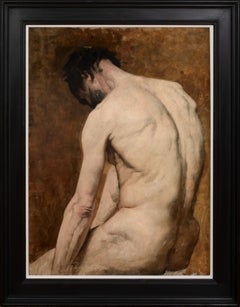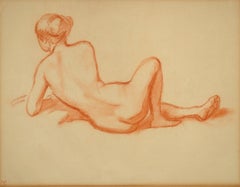Items Similar to J J A Lecomte du Nouÿ (1842-1923) A shoulder and back study, oil painting
Video Loading
Want more images or videos?
Request additional images or videos from the seller
1 of 12
Jean-Jules-Antoine Lecomte du NouÿJ J A Lecomte du Nouÿ (1842-1923) A shoulder and back study, oil painting
$2,627.35
£1,942.84
€2,200
CA$3,608.91
A$4,012.91
CHF 2,100.83
MX$49,018.38
NOK 26,398.98
SEK 24,833.53
DKK 16,751.31
About the Item
Jean-Jules-Antoine Lecomte du Nouÿ (1842-1923)
A shoulder and back study, oil study
oil on canvas
34 x 19.5 cm
In good condition, a few small inpaintings visible under UV lights
Stamp of the Estate sale in Toulouse on the stretcher
In a modern frame : 40 x 25 cm
Provenance :
Estate of the artist and family of the artist by descent
Estate sale in Toulouse 22 June 1999
This very interesting oil study was part of a set kept by the artist. He had studied fragments of anatomy both to use them as models in large compositions but probably also because he represented so many fragments.
It is clear that this fragment of anatomy has a power of suggestion and serves as a relay to the imagination of the viewer, who is led to imagine the rest of the body taken as a model. We can speak of metonymy in painting and it is clear that the artist had this in mind when he kept such studies with him.
Jean-Jules-Antoine Lecomte du Nouÿ was born on 10 June 1842 in Paris.
Originally of a Piedmontese origin, his family had been settled in France since the fourteenth century and by the time of his birth had reached the status of nobility
He was an Orientalist French painter and sculptor.
He was strongly influenced by the works and teachings of Charles Gleyre and Jean-Léon Gérôme. Lecomte du Nouÿ found inspiration for his art through extensive travels to Greece, Turkey, Egypt, Romania and Italy.
The thematic content of Lecomte du Nouÿ's work was mainly figural, but also spanned over a vast range of imagery throughout his career, including classical, historical and religious.
Lecomte du Nouÿ is known for remaining faithful to his detailed, realistic style throughout the extent of his career, despite the onset of the Impressionist, Fauvist and Constructivist artistic movements during his lifetime. His work is said to have contributed significantly to the establishment of an iconic repertoire representing the Orient in the nineteenth century.A Parisian street was named after him in 1932.
Lecomte du Nouÿ showed a strong attachment to visual art from a young age and was reported to have painted portraits of his father and uncle by the age of 6.
In 1861, at 19 years of age, the artistic talents of young Jean-Jules-Antoine Lecomte du Nouÿ prompted him to become a pupil at the atelier of Swiss artist, Charles Gleyre. Under Gleyre's guidance Jean-Jules-Antoine learned the significance of individualistic style and gained the foundations of creative visual presentation.
Later, Lecomte du Nouy further perfected his knowledge of the artistic form under the mentorship of Jean-Léon Gérôme, who was a renowned painter of the Academicism movement. It was at this time that Jean-Jules-Antoine learned the precision required to depict "la belle nature" —a style of illustration that aims to create the most beautiful representations of the natural form. This later became one of the main techniques employed in Lecomte du Nouÿ's signature artwork.
In 1865, Du Nouÿ accompanied fellow artist, Félix Auguste Clément, on his travels to Cairo, Egypt. It was after this voyage that the young Lecomte du Nouy sought to portray the opulence of the Orient. In later years, he continued his travels, visiting countries like Italy and Greece. Lecomte du Nouy found inspiration in all social, historical and literary facets of foreign culture.
The Orientalist style is largely characterized by its content, but also by its subdued realism and precision allotted towards depicting the human form. The latter is a prominent characteristic of the 19th century methods upheld by the Académie des Beaux-Arts. Du Nouÿ was a prominent figure within the sphere of academic art and thereby adhered to a rule-based artistic style of well-developed skill and formal composition. The artistic composition of his paintings was often complemented by the use of half-light, which added certain dramatic and melancholic qualities to his work. To this day some, like Alan Braddock, consider Du Nouÿ to have been decidedly modern for his time, because his work directly and indirectly broached some of the key issues of his day, albeit from a decidedly conservative perspective: colonialism, international trade, gender, religion, and history. Du Nouÿ spent most of the later years of his life in Romania. There he painted primarily the royal family and their subjects.However, he returned to Paris right before his death on 19 February 1923.
Artworks by Lecomte du Nouy are held by museums such as Cleveland Museum of Art, Dahesh Museum of Art in New York, Worcester Art Museum, Musée d'Orsay in Paris, Musée des Beaux-Arts de Nantes, etc....
- Creator:Jean-Jules-Antoine Lecomte du Nouÿ (1842 - 1923, French)
- Dimensions:Height: 13.39 in (34 cm)Width: 7.68 in (19.5 cm)
- Medium:
- Movement & Style:
- Period:
- Condition:
- Gallery Location:Paris, FR
- Reference Number:Seller: Inv 4551stDibs: LU1112215273732
Jean-Jules-Antoine Lecomte du Nouÿ
Jean-Jules-Antoine Lecomte du Nouÿ was born on 10 June 1842 in Paris. Originally of a Piedmontese origin, his family had been settled in France since the fourteenth century and by the time of his birth had reached the status of nobility
He was an Orientalist French painter and sculptor. He was strongly influenced by the works and teachings of Charles Gleyre and Jean-Léon Gérôme. Lecomte du Nouÿ found inspiration for his art through extensive travels to Greece, Turkey, Egypt, Romania and Italy. The thematic content of Lecomte du Nouÿ's work was mainly figural, but also spanned over a vast range of imagery throughout his career, including classical, historical and religious. Lecomte du Nouÿ is known for remaining faithful to his detailed, realistic style throughout the extent of his career, despite the onset of the Impressionist, Fauvist and Constructivist artistic movements during his lifetime. His work is said to have contributed significantly to the establishment of an iconic repertoire representing the Orient in the nineteenth century.A Parisian street was named after him in 1932. Lecomte du Nouÿ showed a strong attachment to visual art from a young age and was reported to have painted portraits of his father and uncle by the age of 6. In 1861, at 19 years of age, the artistic talents of young Jean-Jules-Antoine Lecomte du Nouÿ prompted him to become a pupil at the atelier of Swiss artist, Charles Gleyre. Under Gleyre's guidance Jean-Jules-Antoine learned the significance of individualistic style and gained the foundations of creative visual presentation.
Later, Lecomte du Nouy further perfected his knowledge of the artistic form under the mentorship of Jean-Léon Gérôme, who was a renowned painter of the Academicism movement. It was at this time that Jean-Jules-Antoine learned the precision required to depict "la belle nature" —a style of illustration that aims to create the most beautiful representations of the natural form. This later became one of the main techniques employed in Lecomte du Nouÿ's signature artwork.
In 1865, Du Nouÿ accompanied fellow artist, Félix Auguste Clément, on his travels to Cairo, Egypt. It was after this voyage that the young Lecompte du Nouy sought to portray the opulence of the Orient. In later years, he continued his travels, visiting countries like Italy and Greece. Lecompte du Nouy found inspiration in all social, historical and literary facets of foreign culture.
Du Nouÿ spent most of the later years of his life in Romania. There he painted primarily the royal family and their subjects.However, he returned to Paris right before his death on 19 February 1923. Artworks by Lecomyte du Nouy are held by museums such as Cleveland Museum of Art, Dahesh Museum of Art in New York, Worcester Art Museum, Musée d'Orsay in Paris, Musée des Beaux-Arts de Nantes, etc....
About the Seller
5.0
Gold Seller
Premium sellers maintaining a 4.3+ rating and 24-hour response times
Established in 2018
1stDibs seller since 2019
251 sales on 1stDibs
Typical response time: <1 hour
- ShippingRetrieving quote...Shipping from: Paris, France
- Return Policy
Authenticity Guarantee
In the unlikely event there’s an issue with an item’s authenticity, contact us within 1 year for a full refund. DetailsMoney-Back Guarantee
If your item is not as described, is damaged in transit, or does not arrive, contact us within 7 days for a full refund. Details24-Hour Cancellation
You have a 24-hour grace period in which to reconsider your purchase, with no questions asked.Vetted Professional Sellers
Our world-class sellers must adhere to strict standards for service and quality, maintaining the integrity of our listings.Price-Match Guarantee
If you find that a seller listed the same item for a lower price elsewhere, we’ll match it.Trusted Global Delivery
Our best-in-class carrier network provides specialized shipping options worldwide, including custom delivery.More From This Seller
View AllL V Guirand de Scevola (1871-1950) A young naked woman standing , Signed pastel
By Lucien-Victor Guirand de Scévola
Located in Paris, FR
Lucien-Victor Guirand de Scevola (1871-1950)
A young naked woman standing
Pastel on paper
Signed lower right and dedicated, "à JM Fournol (?)"
63 x 40 cm
In fairly good condition:...
Category
1920s Art Deco Nude Drawings and Watercolors
Materials
Pastel
Attributed to Eugene Deully (1866-1933) A woman, study, drawing
Located in Paris, FR
Attributed to Eugene Deully (1866-1933)
A woman , study,
Pencil and heightenings of white gouache on blue grey paper in two parts, the left part added
...
Category
1890s French School Nude Drawings and Watercolors
Materials
Pencil
Edmond Suau (1871-1929) Une Académie, Standing man, signed oil on canvas
Located in Paris, FR
Edmond Suau (1871-1929)
Une Académie, Standing man,
oil on canvas
signed lower left
88 x 70 cm
In quite good condition, some damages - small lacks of painting - in the lower part, ...
Category
Early 1900s Realist Nude Paintings
Materials
Oil
French School 19th Century, A Man bust-length, oil on wood panel
Located in Paris, FR
French School of the 19th Century
A Man bust-length
Oil on wood panel
31,5 x 22 cm
Framed 47,8 x 37,5 cm
In good condition. The painter chose to deal with the roughness of his suppo...
Category
1850s Romantic Portrait Paintings
Materials
Oil
Jules-Eugène Lenepveu (1819-1898) Portrait of a man in profile, signed drawing
Located in Paris, FR
Jules-Eugène Lenepveu (1819-1898)
Portrait of a man in profile
signed on the lower right
Pencil and heightenings of white gouache on paper
19.5 x 13 cm
Framed : 29 x 22.7 cm
Jules-Eugène Lenepveu is of course particularly well known for his large-scale paintings, such as the one on the ceiling of the Paris Opera, but his work here is much more delicate and intimate. We recognise the artist's mastery of talent, but the play of textures, with its highlights of white that enliven and illuminate the model's face, is also very subtle.
There's a particularly charming sense of life and impression of light.
Jules-Eugène Lenepveu was born in Angers on 12 December 1819, on the site of the street that now bears his name, into a family of small shopkeepers. The painter showed a deep attachment to his family throughout his life through his correspondence and the many portraits of his relatives.
He entered the drawing school in Angers in 1833, where he was a pupil of Jean-Michel Mercier. There he rubbed shoulders with the sculptor Ferdinand Taluet. He arrived in Paris in 1837 and entered the Beaux-Arts, where he was officially admitted to François-Édouard Picot's studio in 1838. He exhibited his work "L'Idylle" at the Salon of 1843 and, that same year, left for his first visit to Italy. He was awarded the Second Prix de Rome in 1843 for "Cincinnatus recevant les députés du Sénat" (Cincinnatus receiving the deputies of the Senate), then the First Prize in 1847 for "La Mort de Vitellius" (The Death of Vitellius).
A resident at the Villa Médicis from 1848, he was surrounded by painters Alexandre Cabanel, Léon Benouville, Gustave Boulanger, Félix Barrias...
Category
1860s Romantic Portrait Drawings and Watercolors
Materials
Pencil, Gouache
Attributed to Eugene Deully (1866-1933) A sitting woman, study, drawing
Located in Paris, FR
Attributed to Eugene Deully (1866-1933)
A sitting woman, study,
Pencil and heightenings of white gouache on blue grey paper;
23 x 14.5 cm
Framed (damag...
Category
1890s French School Figurative Drawings and Watercolors
Materials
Pencil
You May Also Like
Antique French Classical Study of the Male Back Nude Drawing 19th Century
Located in Cirencester, Gloucestershire
Study of the Male Back
French School, early/ mid 19th century
charcoal on artist paper stuck on board, glass covering framed
framed: 13 x 9 inches
board : 12 x 8 inches
Provenance: p...
Category
19th Century Post-Impressionist Nude Paintings
Materials
Charcoal
$869 Sale Price
30% Off
Paul Anton Kaulbach (1864 Hanover - 1930 Berlin) Male Nude
Located in Greding, DE
Depiction of a male nude in diffuse architectural scenery. Signed lower right (Paul) Anton Kaulbach (1864 Hannover - 1930 Berlin).
Oil on canvas, in gold-patinated frame. Image size:...
Category
20th Century Abstract Impressionist Figurative Paintings
Materials
Oil, Canvas
Study Of A Nude Male, 19th Century French Academy Study
Located in Blackwater, GB
Study Of A Nude Male, 19th Century
circle of HENRI DE TOULOUSE-LAUTREC (1864-1901)
Large 19th Century French Academy portrait of a male nude in a studio, oil on canvas. Excellent q...
Category
19th Century Portrait Paintings
Materials
Oil, Canvas
$8,827 Sale Price
20% Off
Female Nude from the Back, around 1900 / - The contour of the Art Nouveau -
By Ludwig von Hofmann
Located in Berlin, DE
Ludwig von Hofmann (1861 Darmstadt - 1945 Pillnitz), Female nude from the back, around 1900. Red chalk drawing on watermarked drawing paper, 36 cm x 44 cm (sheet size). Artist's liga...
Category
Early 1900s Art Nouveau Nude Drawings and Watercolors
Materials
Paper
19th Century French Symbolist Oil Painting Sketch of Artists Nude Model Posing
Located in Cirencester, Gloucestershire
The Artists Model
French School, late 19th century
oil on canvas, unframed
canvas: 20 x 17.5 inches
provenance: private collection, France
condition: very good and sound condition
Category
Late 19th Century Symbolist Portrait Paintings
Materials
Oil, Canvas
$1,351 Sale Price
30% Off
Circa 1800 French Neo-Classical Study of Male Nude Standing Academic Pose
Located in Cirencester, Gloucestershire
Nude Male Study
French, circa 1800
Neo-Classical School, circle of Jacques Louis David (French 1748-1825)
Pencil drawing on paper, unframed
drawing: 14 x 8 inches
double sided with ...
Category
Early 19th Century French School Nude Paintings
Materials
Charcoal, Pencil
More Ways To Browse
Young French Nude
Nude Models Large
Antique Greek Painting
Antique Icon Painting
19th Century Greece Painting
French Academic Nudes
19th Century Oil Paintings Religious
Italian Religious Icon
19th Century Turkish Paintings
Antique Greek Icons
Charles Clement
Greek Religious Icons
Royal Worcester Used
19th Century French Religious Oil Painting
Antique Broach
Auguste Clement
Leon Collard
Madeleine Flaschner
